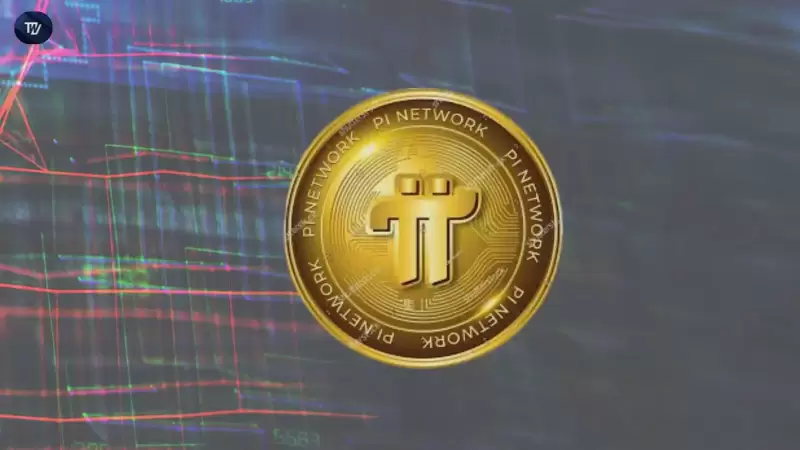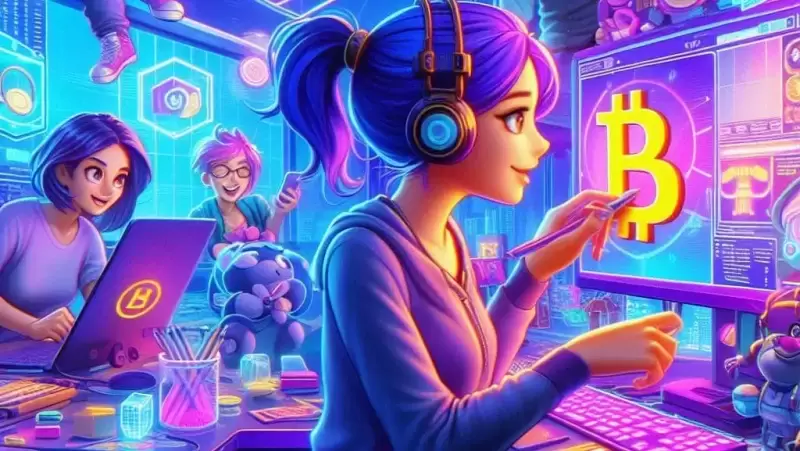 |
|
 |
|
 |
|
 |
|
 |
|
 |
|
 |
|
 |
|
 |
|
 |
|
 |
|
 |
|
 |
|
 |
|
 |
|
Cryptocurrency News Articles
Paddle Finance Launches on Berachain, Bringing Powerful Liquidity Tools to Overlooked Assets
Apr 29, 2025 at 04:02 am
While most DeFi protocols chase the same categories, such as blue-chip tokens, staking protocols, and liquid stablecoins, a different type of asset activity is growing

Paddle Finance has launched on Berachain, bringing powerful liquidity tools to DeFi assets that most protocols tend to ignore.
Paddle Finance has launched on Berachain, bringing powerful liquidity tools to DeFi assets that most protocols tend to ignore.
While most DeFi protocols are chasing the same categories—blue-chip tokens, staking protocols, and liquid stablecoins—a different type of asset activity is unfolding behind the scenes. People hold NFTs, LP tokens, memecoins, and tokenized real-world assets in their wallets, each fragment of value that could be engaged with. But few platforms are built to support these assets, leaving most of them sitting idle.
While most DeFi protocols are chasing the same categories—blue-chip tokens, staking protocols, and liquid stablecoins—a different type of asset activity is unfolding behind the scenes. People hold NFTs, LP tokens, memecoins, and tokenized real-world assets in their wallets, each fragment of value that could be engaged with. But few platforms are built to support these assets, leaving most of them sitting idle.
Paddle Finance was designed precisely for this gap, a lending and trading protocol built to unlock liquidity from non-standard assets. It operates on Base and Berachain, a chain where activity is heating up rapidly, with $2.69 billion in TVL already reached on Berachain alone. While others chase volume in familiar categories, PaddleFi focuses on helping users make use of what they already hold.
Paddle Finance was designed precisely for this gap, a lending and trading protocol built to unlock liquidity from non-standard assets. It operates on Base and Berachain, a chain where activity is heating up rapidly, with $2.69 billion in TVL already reached on Berachain alone. While others chase volume in familiar categories, PaddleFi focuses on helping users make use of what they already hold.
Berachain stands out by tying liquidity to real utility through its Proof of Liquidity (PoL) model. This model rewards protocols based on genuine on-chain activity rather than passive staking, making it an ideal environment for asset movement and user engagement. In this PoL framework, Berachain has become a hub for NFTs, especially among degen communities, with projects like Steady Teddys, Bullas, Mibera, and Yeet already integrating with PaddleFi for borrowing, OTC trading, and community liquidity programs.
Berachain stands out by tying liquidity to real utility through its Proof of Liquidity (PoL) model. This model rewards protocols based on genuine on-chain activity rather than passive staking, making it an ideal environment for asset movement and user engagement. In this PoL framework, Berachain has become a hub for NFTs, especially among degen communities, with projects like Steady Teddys, Bullas, Mibera, and Yeet already integrating with PaddleFi for borrowing, OTC trading, and community liquidity programs.
On the technical side, Berachain is Ethereum-compatible, easing deployment for developers, and it's focused on supporting platforms like PaddleFi that can handle assets beyond the ERC-20 standard. This alignment supports community-driven, organic asset growth rather than top-down design, allowing new use cases and token types to emerge naturally.
On the technical side, Berachain is Ethereum-compatible, easing deployment for developers, and it's focused on supporting platforms like PaddleFi that can handle assets beyond the ERC-20 standard. This alignment supports community-driven, organic asset growth rather than top-down design, allowing new use cases and token types to emerge naturally.
Most DeFi platforms are built around standard tokens, which made sense when only those assets had enough liquidity to be useful. But now, NFTs hold real value, RWAs are tokenized, and memecoins have strong communities despite lower market caps. PaddleFi is designed to cater to these assets, offering:
This model provides users with more flexibility without needing to sell or split assets, offering access to groups typically left out of DeFi, including collectors and small token holders.
This model provides users with more flexibility without needing to sell or split assets, offering access to groups typically left out of DeFi, including collectors and small token holders.
PaddleFi’s traction can be measured with $2.55 million in assets locked across its contracts and over $3 million in volume processed by the protocol in April alone, signaling strong growth in lending and OTC functions. This activity isn’t driven by generalized DeFi users but by NFT-native and degen communities on Berachain, who use “middle-class” NFTs, meme tokens, and early-stage RWAs with strong engagement but low market caps.
PaddleFi’s traction can be measured with $2.55 million in assets locked across its contracts and over $3 million in volume processed by the protocol in April alone, signaling strong growth in lending and OTC functions. This activity isn’t driven by generalized DeFi users but by NFT-native and degen communities on Berachain, who use “middle-class” NFTs, meme tokens, and early-stage RWAs with strong engagement but low market caps.
Berachain’s design aligns perfectly with this type of activity, valuing asset usage over appearance. PaddleFi enables these communities to engage with DeFi in ways that were previously unavailable, offering more utility than simply holding assets.
Berachain’s design aligns perfectly with this type of activity, valuing asset usage over appearance. PaddleFi enables these communities to engage with DeFi in ways that were previously unavailable, offering more utility than simply holding assets.
Berachain already hosts protocols like Kodiak for swaps, Infrared for staking, and Honey for stablecoin liquidity, but it lacked tools for the assets that don’t fit into these categories. PaddleFi fills this gap, connecting overlooked assets like NFTs and RWAs to functional tools. This allows NFT holders to borrow without selling, RWAs to access capital without centralized approval, and smaller tokens to be traded directly without needing a large exchange listing.
Berachain already hosts protocols like Kodiak for swaps, Infrared for staking, and Honey for stablecoin liquidity, but it lacked tools for the assets that don’t fit into these categories. PaddleFi fills this gap, connecting overlooked assets like NFTs and RWAs to functional tools. This allows NFT holders to borrow without selling, RWAs to access capital without centralized approval, and smaller tokens to be traded directly without needing a large exchange listing.
PaddleFi isn’t trying to replace other dApps but rather to add value by supporting asset types that are usually ignored in traditional DeFi. In the context of Berachain, where liquidity is high but fragmented, PaddleFi helps bring more capital into circulation and create deeper integration between different protocols and community initiatives.
PaddleFi isn’t trying to replace other dApps but rather to add value by supporting asset types that are usually ignored in traditional DeFi. In the context of Berachain, where liquidity is high but fragmented, PaddleFi helps bring more capital into circulation and create deeper integration between different protocols and community initiatives.
As the definition of on-chain assets expands, platforms that support the long tail of assets—not just the top 10 tokens—will continue to thrive. PaddleFi believes the future of DeFi is not just about liquidity but also about making a diverse range of assets liquid. And with its growing success, this bet is already paying off.
As the definition of on-chain assets expands, platforms that support the long tail of assets—not just the top 10 tokens—will continue to thrive. PaddleFi believes the future of DeFi is not just about liquidity but also about making a diverse range of assets liquid. And with its growing success, this bet is already paying off.
With Berachain set to scale further, PaddleFi is well-positioned to deepen its reach. The upcoming launch of NFT-backed money markets will provide new opportunities for collections to tap into DeFi, with PaddleFi set to play a key role in this integration. This infrastructure and community alignment offers a glimpse of the future of DeFi: fast, flexible, and designed for assets that don’t fit the traditional mold but still deserve a place in the ecosystem.
Disclaimer:info@kdj.com
The information provided is not trading advice. kdj.com does not assume any responsibility for any investments made based on the information provided in this article. Cryptocurrencies are highly volatile and it is highly recommended that you invest with caution after thorough research!
If you believe that the content used on this website infringes your copyright, please contact us immediately (info@kdj.com) and we will delete it promptly.


























































